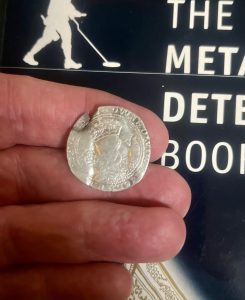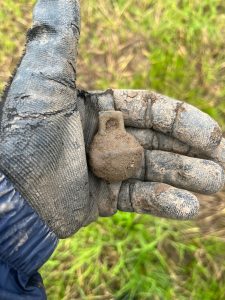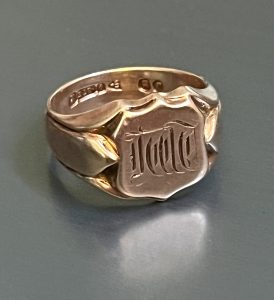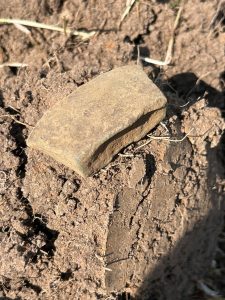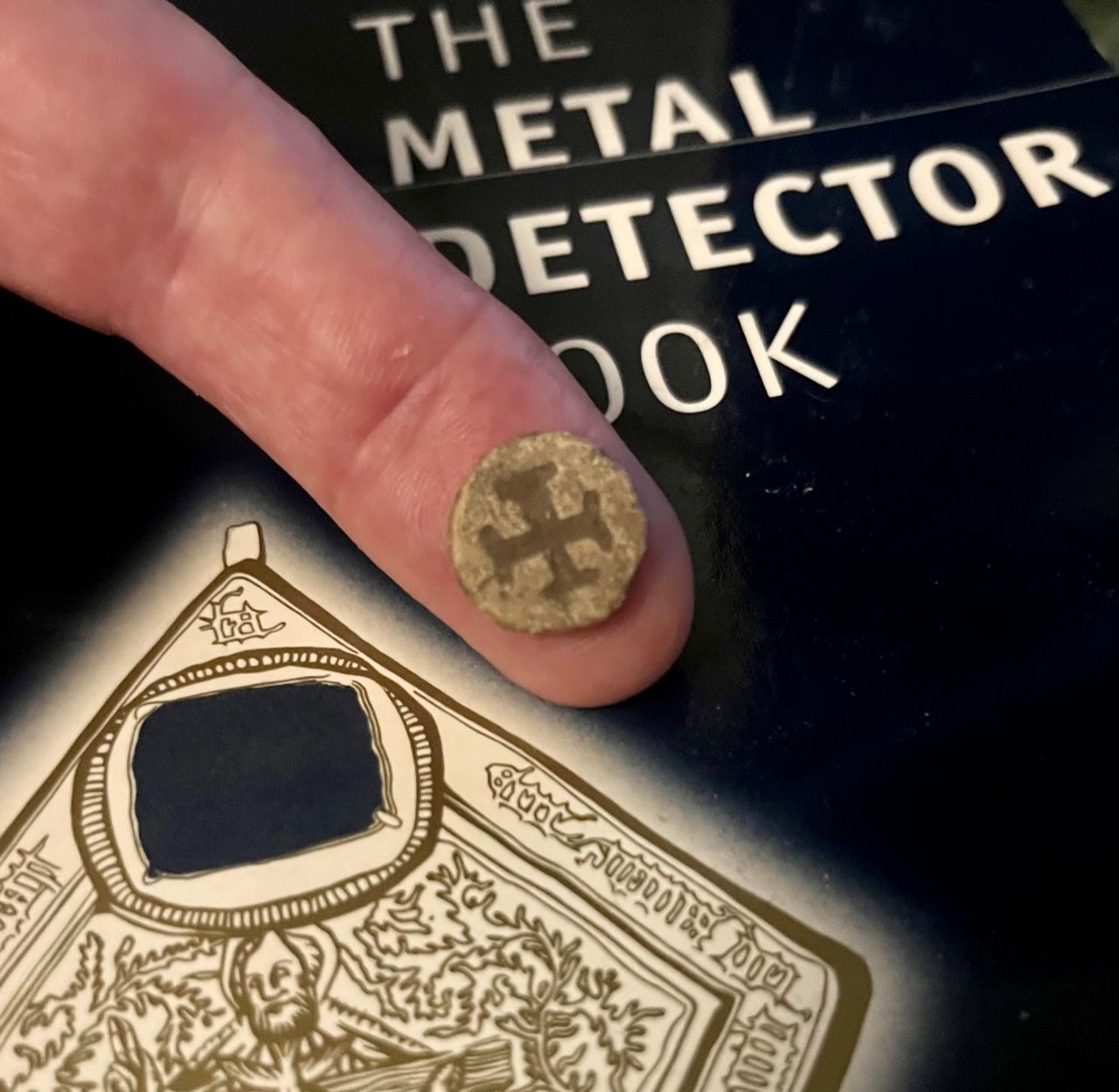
It was a late spring day and Bob and I were metal detecting on a huge 20 acre field on a busy road junction. The field had been left in stubble across the winter by now and although the stubble was soft and partly decayed quite a bit of weed growth had taken place so it wasn’t the easiest field to detect on.
We had studied old maps of the area and knew that back in the mid 1800’s it had been maybe 7 or 8 separate fields and in one corner there used to be a building of some sort, probably a house with a smallholding around it.
One part of the field had so far revealed a large number of buttons, nothing particularly old or interesting but there was definite area of high density button finds. Possibly as a result of old clothing being used to fertilise the land.
On another area we had found between us 5 silver love tokens. These were a popular thing in the 18th and 19th Centuries in England. A young man would take a silver coin and make it as smooth as he possibly could. It could take a long time to make it smooth enough so that the features of the coin were no longer visible. Sometimes he would bend it slightly, or even give it a double bend, like an S shape.
The purpose of his efforts were to impress a young lady that he had set his sights on, and he would present her with this token of his love. Legend goes that if she liked him, she would keep it, but if not she would throw it into the nearest field. I suppose this is why so many detectorists find them when out detecting. There must have been a lot of spurned young men back then.
Below is a selection smooth silver discs believed to be coins modified by smoothing and bending into love tokens for their intended sweethearts
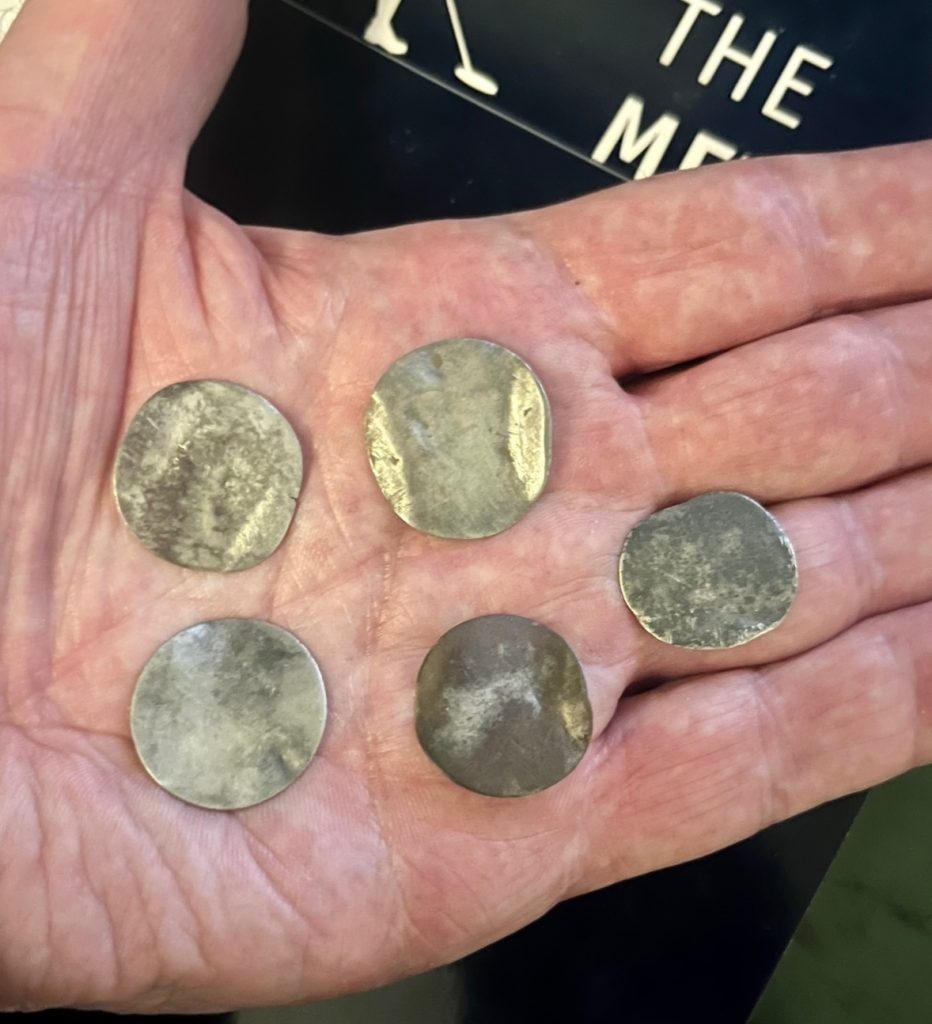
We continued to find various coins and buttons, nothing of particular interest, we each found a spindle whorl and then decided to have a break for lunch. Which as usual Bob provided crisps, nuts and biscuits and I would provide a selection of pork pies, sausage rolls and other savoury items. Our lunch breaks had developed into full blown picnics by now!
After feeding our faces for half an hour it was time to get back to the serious task of metal detecting. We decided to stay on the high ground closer to the main road as an earlier test detect of the lower ground hadn’t revealed much and all the love tokens buttons and the two spindle whorls had come from the higher ground.
Our detecting continued to reveal more buttons and we both had a lead bag seal each.
I then had a strong but small signal, it sounded good so i decided to dig it out, well I would wouldn’t I, no point in leaving it there. The ground here was really soft and easy to dig, so there was no digging out clods of turf, it was just a case of scooping out a spadeful of soil then checking whether the item was in or out of the hole. On this occasion it took a second spadeful to get the item out, then it was time for the pinpointer to do its thing and to find whatever it was.
It took me a little while to find it, but soon it was in my hand. I was holding a tiny lead disc with some sort of cross imprinted on one side. Something about it looked familiar, but I decided to put it safely in my coin pod for further investigation once I got home.
We detected for another hour or so, but didn’t find anything else of interest so then headed off to one of the local pubs for quick pint or two, then headed home.
Once I was home I sorted through my finds, but it was the little lead token that was the most interesting of them all. What could it be? I decided not to clean it at all. The mud in the cross made it stand out and I felt that if I washed it out it just wouldn’t look the same. The underside is just plain and flat.
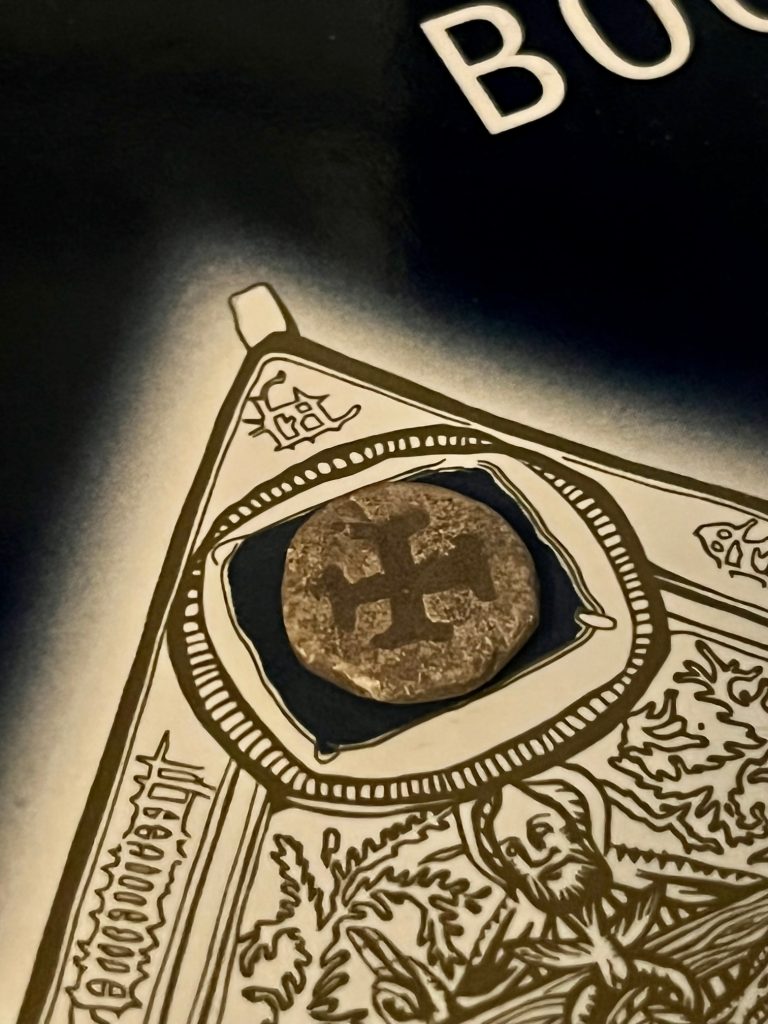
I’m fairly sure that it is too small to be a trading token of any sort, it only measures around 13mm in diameter and only weighs 3.1g, so surely that is just not practical to use as a token?
My only thoughts are that maybe it is a gaming piece of some sort. I can imagine it being used as some sort of counter to be moved around a board, or if not a gaming piece made some sort of tally counter to keep a record of something.
Then we come to the cross like design on it. It is very much like a Maltese cross with the 8 points on the arms of the cross, two on each arm. I immediately thought of the Knights Templar society that were active at the time of the crusades, protecting pilgrims who were travelling to the holy land, but they were active in the 12th and 13th Century, could this tiny lead disc be that old?
I placed some photos online and a couple of Knights Templar collectors replied to say that they were certain that this tiny find was related to the Knights Templar and it could be a gaming piece or a religious souvenir kept by a returning pilgrim. Whatever it is, it is one of my favourite finds.

